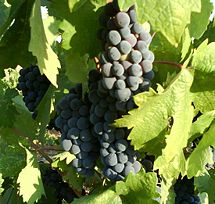<div id="attachment_1363" class="wp-caption alignleft" style="width: 215px"> <p class="wp-caption-text">Zinfandel grapes (image from Wikipedia)</p></div>Recently, the Washington Post ran an article recommending various Zinfandels. Although the recommendations were quite good, particularly the Frog’s Leap 2008, the Washington Post piece confused many wine newcomers. White Zinfandels are well-known and well-liked, but few non-wine-expert-folks realize that Red Zinfandels exist.
<p class="wp-caption-text">Zinfandel grapes (image from Wikipedia)</p></div>Recently, the Washington Post ran an article recommending various Zinfandels. Although the recommendations were quite good, particularly the Frog’s Leap 2008, the Washington Post piece confused many wine newcomers. White Zinfandels are well-known and well-liked, but few non-wine-expert-folks realize that Red Zinfandels exist.
White Zinfandel makes up 9.9% of U.S. wine sales, which is six times greater than sales of Red Zinfandel. This could mean people prefer whites to reds, or perhaps many folks are simply unaware that Red Zinfandels exist, which has been my experience. But they are well worth getting to know! Zinfandel grapes thrive in cool, coastal locations--like California's wine country--and arrived in this state in the early 1800's. Red Zinfandels are spicy, peppery wines containing complex berry or dark cherry flavors. In my own kitchen, they have paired very well with both American and Italian foods. Hamburgers, steaks, and hearty pasta sauces make for delicious Red Zinfandel companions! Like Rosés, Red Zins also work well as solo summertime sippers.
While many people mistakenly refrigerate Red Zinfandel wine, it should be served around 65 °F. Though this is sometimes “room temperature” to folks experiencing a New England winter, the same can’t be said for the rest of the country! To keep Red Zins at their ideal temperature, consider investing in a small wine refrigerator that has a setting for serving temperature (as opposed to storage temperature, which is around 55 degrees).
With all that said, what’s the difference between Red and White Zinfandel if the grape used to make both is the same? Answer: Red Zinfandel is made using the entire Zinfandel grape, while White Zinfandel is made with naked Zinfandel grapes (the skins have been removed). Skins impart color, flavor and tannins to the wine, creating the characteristic differences between red and white wines.


